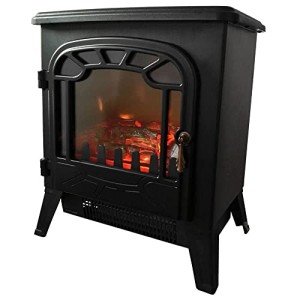The History Of Fireplaces
Fireplaces in the UK: A Comprehensive Guide
Fireplaces have long been an important part of British homes, using both aesthetic beauty and practical heat. As the weather condition turns cold, the appeal of a cozy fire beckons, changing any living area into a sanctuary. In www.fireplacesandstoves.uk , we will explore the numerous types of fireplaces offered in the UK, considerations for setup, maintenance tips, and answers to often asked concerns about fireplaces.
Types of Fireplaces
When choosing a fireplace for a UK home, a number of alternatives are readily available, each with unique features and benefits. The following table sums up the main types of fireplaces popular in the UK:
Fireplace Type
Description
Pros
Cons
Open Hearth
Traditional fireplaces that burn wood or coal, offering a rustic feel.
Genuine ambiance; terrific heat distribution
Less energy-efficient; requires chimney maintenance
Gas Fireplaces
Usage natural gas or gas; can be direct vent or ventless.
Instantaneous heat; simple to operate; cleaner burning
Preliminary installation expense; may need gas line
Electric Fireplaces
Simulate a flame utilizing LED lights and provide heat through electrical power.
Safe; simple to install; no flue needed
Less authentic; greater operating expenses
Wood-burning Stoves
Closed-system fireplaces that burn logs, providing high performance.
High heat output; eco-friendly when utilizing sustainable wood
Restricted visual compared to open hearth
Bioethanol Fireplaces
Eco-friendly option that burns bioethanol, creating real flames.
No chimney required; versatile style options
Can be expensive to operate; minimal heat output
Advantages and disadvantages of Each Type
Open Hearth
- Pros:
- Provides character to any living space.
- Effective heat circulation due to open flames.
- Cons:
- Less energy-efficient and more smoke than modern options.
- Needs regular cleaning and maintenance of the chimney.
- Pros:
Gas Fireplaces
- Pros:
- Easy to control and operate with the flick of a switch.
- Cleaner option with less soot accumulation.
- Cons:
- Requires a gas supply and setup expenses can be high.
- Might not supply the exact same atmosphere as a traditional fire.
- Pros:
Electric Fireplaces
- Pros:
- Simple installation without any chimney or flue needed.
- Is available in numerous styles, looking like traditional choices.
- Cons:
- Lacks the realism of real flames and can become pricey with continuous use.
- Pros:
Wood-burning Stoves
- Pros:
- Highly efficient and produces significant heat.
- Eco-friendly resource when utilizing responsibly sourced wood.
- Cons:
- Requires extra space for log storage and routine upkeep.
- Pros:
Bioethanol Fireplaces
- Pros:
- Flexible positioning due to no need for traditional venting.
- Clean-burning and very little effect on indoor air quality.
- Cons:
- Can be less cost-effective for continuous use compared to gas or wood.
- Heat output is less effective for larger areas.
- Pros:
Setup Considerations
When installing a fireplace in a UK home, numerous aspects must be taken into account:
- Building Regulations: Ensure compliance with regional building codes and safety guidelines.
- Chimney and Flue: Determine the need for a chimney or flue system based on the type of fireplace picked.
- Ventilation: Proper ventilation is important for safety, specifically with gas, wood, and bioethanol alternatives.
- Location: Consider the very best place for the fireplace to take full advantage of heat distribution and aesthetic appeal.
- Professional Help: Engaging an expert installer can make sure a safe and precise setup customized to the specific kind of fireplace.
Upkeep Tips
Regular maintenance of a fireplace is necessary for both safety and performance. Follow these guidelines to keep your fireplace in peak condition:
- Chimney Sweeping: Have your chimney expertly swept at least as soon as a year to prevent obstructions and minimize fire risk.
- Check for Damage: Regularly examine for leakages, cracks, or damage, particularly in gas and wood-burning fireplaces.
- Clean the Surroundings: Ensure the location around the fireplace is free from dust and flammable materials.
- Examine Carbon Monoxide Detectors: Test detectors regularly, particularly in homes with gas-burning devices.
- Store Wood Properly: If utilizing a wood-burning range, store wood in a dry location to minimize wetness content.
Often Asked Questions
What is the best kind of fireplace for a small room?
For small areas, electric fireplaces or bioethanol models are often advised due to their smaller sized size, safety features, and visual appeals.
Are electric fireplaces more affordable to run than gas?
Electric fireplaces generally have a lower in advance expense, but depending on electricity rates, they can be more expensive to run long term compared to gas.
Do wood-burning stoves need a lot of maintenance?
While they do need some upkeep, such as cleaning and routine chimney sweeps, many house owners find that modern wood-burning ranges are effective and fairly low upkeep compared to traditional open hearths.
Can I set up a gas fireplace myself?
While some house owners might attempt DIY installation, it is highly suggested to work with an expert for gas fireplace setups due to safety concerns and regulative compliance.
How can I make the most of the heat output of my fireplace?
To maximize heat output from any fireplace, consider the following:
- Keep doors and windows closed during usage.
- Use heat-efficient logs or fuels.
- Guarantee correct airflow around the fire.
- Make use of fans or blowers that can distribute warm air throughout the space.
Fireplaces remain a cherished component within UK homes, providing warmth, appeal, and a welcoming atmosphere. Offered the range of options and their unique functions, house owners can choose the best fireplace to match their living space while making sure safety and efficiency. With regular upkeep and a clear understanding of the setup requirements, anybody can delight in the appeal and convenience of a fireplace for years to come.
